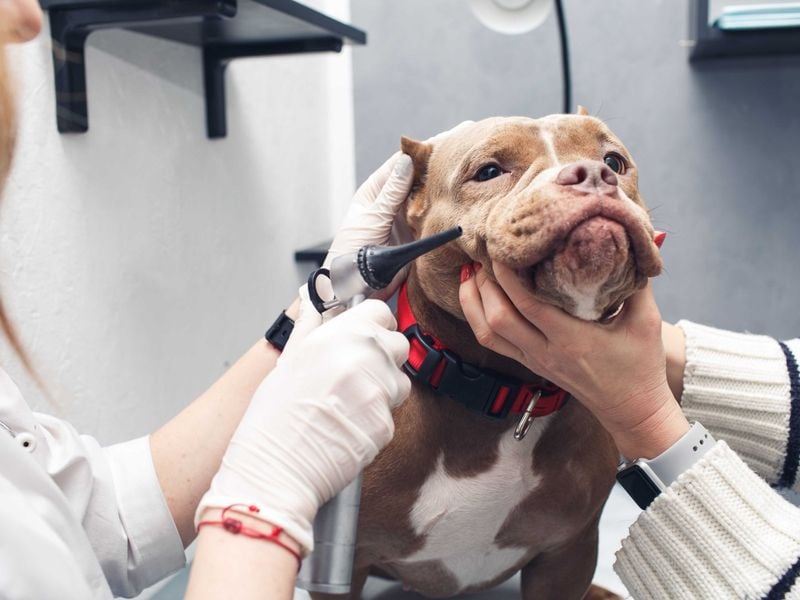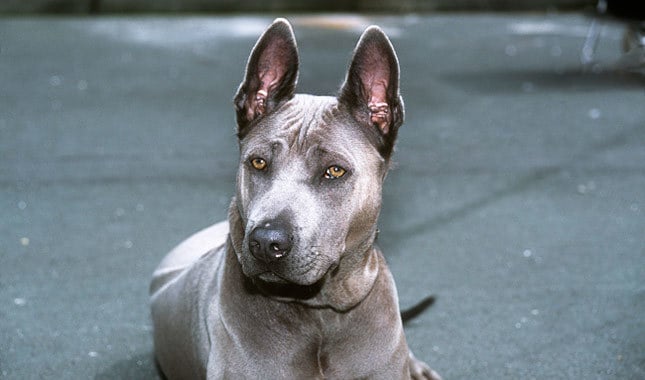17 Key Differences Between German Shepherds And Pit Bulls
Few dog breeds spark as much passion—and as many debates—as the German Shepherd and the Pit Bull. Both are strong, intelligent, and fiercely loyal, but they couldn’t be more different in personality, appearance, and the public eye.
Whether you’re thinking of adopting one or just fascinated by canine contrasts, understanding these differences is crucial.
German Shepherds are often seen as the gold standard for working dogs—focused, disciplined, and naturally protective. They’ve served alongside police officers, guided the visually impaired, and even helped in war zones.
Pit Bulls, on the other hand, have a reputation that swings wildly from “family sweetheart” to “public menace,” depending on who you ask. That reputation, while often rooted in myth, has shaped how people perceive the breed.
Pit Bulls are frequently misunderstood, despite their goofy, affectionate nature and eagerness to please.
German Shepherds, meanwhile, are usually viewed with respect—even fear—thanks to their commanding presence and sharp intelligence.
But these generalizations don’t tell the whole story. Both breeds have unique traits, challenges, and strengths that make them suited for very different lifestyles and owners.
Knowing what sets them apart can help you make an informed decision—or just deepen your appreciation for man’s best friend.
In this article, we’ll explore 17 key differences between German Shepherds and Pit Bulls. From their physical features to their training styles and even their bark habits, nothing is off the table.
So whether you’re a die-hard fan of one breed or simply curious about both, get ready for a side-by-side breakdown that might just surprise you.
1. Breed Origins
Long before they became household names, both breeds had very different jobs.
German Shepherds were developed in Germany in the late 1800s to herd and protect flocks of sheep, showcasing their natural intelligence and loyalty.
In contrast, Pit Bulls trace their roots to the United Kingdom, where they were originally bred for bull-baiting and later became versatile farm dogs.
This contrast in origin stories speaks volumes about their behavior today.
German Shepherds often carry a strong instinct to protect and follow commands, thanks to their herding background.
Pit Bulls, on the other hand, possess a tenacity and confidence that comes from their bull-baiting ancestry, but they’re also surprisingly affectionate and eager to bond with humans.
Their history still shapes how they approach the world—and how the world sees them.
2. Physical Build
You’d never mistake one for the other in a lineup.
German Shepherds are typically tall and lean, with a sloped back and powerful gait designed for endurance and agility.
Pit Bulls are more compact and muscular, exuding strength in a shorter, more squared-off frame.
That difference in physique reflects their original roles: herding versus brute strength.
German Shepherds can look regal and sharp, with longer limbs and an elegant outline.
Pit Bulls are stocky, solid, and built like little tanks—powerful but surprisingly agile.
While both are undeniably strong, their builds lead to different types of movement and exercise needs.
Understanding this can help new owners choose a breed that fits their lifestyle, whether it’s long hikes with a Shepherd or high-intensity play sessions with a Pit Bull.
3. Coat Type
Fur maintenance might seem minor until it becomes a daily chore.
German Shepherds come equipped with a double-layered coat that sheds year-round—especially during seasonal changes.
It’s dense, weather-resistant, and built for working in harsh conditions.
Pit Bulls, by contrast, wear a short, smooth coat that’s incredibly low-maintenance.
They hardly shed, and a quick weekly brush usually does the trick.
But don’t let that simplicity fool you—they can be prone to skin allergies, so care still matters.
For households that want less vacuuming and grooming, Pit Bulls might be more convenient.
Yet if you’re drawn to that majestic, plush look, the German Shepherd’s coat is hard to beat—just keep a lint roller handy.
4. Intelligence
Brains are where German Shepherds truly shine.
They consistently rank among the top three smartest dog breeds in the world, often mastering complex tasks with ease.
Their mental sharpness makes them naturals at police work, obedience training, and agility competitions.
Pit Bulls are intelligent too, but their learning style differs.
They’re quick to pick up commands, especially if it’s fun or involves treats, yet they sometimes act on impulse.
This independence can be mistaken for stubbornness, but it’s really a different kind of cleverness.
Both breeds benefit from mental stimulation and thrive when challenged.
It’s not about who’s smarter—it’s about how that intelligence is expressed.
5. Trainability
Some dogs crave structure, and others just want to have a good time.
German Shepherds fall into the first camp—they respond well to authority, routine, and repetition.
They’re obedient and driven, making them ideal candidates for advanced training.
Pit Bulls, however, require a more playful, patient approach.
They can learn just as much, but they won’t be bullied into submission.
Consistency and positive reinforcement go a long way with this breed.
If you’re a first-time dog owner, Shepherds might feel easier to mold.
But those who enjoy a little spirited challenge might find training a Pit Bull especially rewarding.
6. Temperament
First impressions can be deceiving with these two.
German Shepherds often appear serious, focused, and sometimes aloof with strangers.
They form tight bonds with their family but remain alert and cautious in unfamiliar situations.
Pit Bulls are social butterflies by comparison.
They’ll happily approach strangers with a wagging tail and open heart.
Despite their tough image, many Pit Bulls are total goofballs with a deep love for people.
This doesn’t mean one is better than the other—it depends on your home environment.
If you want a dog who’s reserved and protective, a Shepherd might fit best.
If you prefer a dog who sees everyone as a potential best friend, Pit Bulls deliver.
7. Energy Levels
Neither of these breeds is a couch potato.
German Shepherds are high-energy working dogs who need structured outlets like training sessions, long walks, or agility work.
They get restless if they don’t have a “job” to do.
Pit Bulls also have loads of energy, but they burn it differently.
They love intense bursts of play—think tug-of-war, zoomies, or fetch.
Afterward, they’re more than happy to crash on the couch beside you.
Understanding how each breed uses their energy can help prevent behavioral issues.
Shepherds demand purpose; Pit Bulls demand fun.
Either way, get ready to stay active.
8. Exercise Needs
A bored dog becomes a destructive dog—especially with these two.
German Shepherds thrive on variety in their routines: mental challenges, long hikes, and obedience drills.
They crave a sense of accomplishment from their daily activities.
Pit Bulls, while equally energetic, prefer short, intense workouts.
They’re sprinters, not marathoners, and love games that tap into their physical strength.
Puzzle toys can help satisfy their minds too, though they’re not as work-driven as Shepherds.
Skipping exercise leads to chewing, digging, and other unwanted behaviors.
It’s not about just burning calories—it’s about stimulating their instincts.
9. Loyalty
Both breeds love their humans with all their hearts.
German Shepherds often latch onto one person in particular, forming a deep and sometimes exclusive bond.
They’ll follow you from room to room and act as your shadow.
Pit Bulls spread their love more generously.
They’re the type to greet every family member (and maybe even the mail carrier) with the same big smile and tail wag.
That doesn’t mean they’re less loyal—it just looks different.
No matter the breed, loyalty runs deep.
It’s just a matter of who gets the biggest piece of their heart.
10. Guarding Instincts
Some dogs were simply built for protection.
German Shepherds have a strong guarding drive—they’re naturally wary of strangers and quick to alert their owners to danger.
It’s one reason they’re used so often in law enforcement and military work.
Pit Bulls don’t usually fall into the same category.
They might defend their home in a crisis, but most don’t show the same level of suspicion toward newcomers.
In fact, many are overly trusting.
If home security is a priority, the Shepherd has a clear edge.
But if you want a pup who welcomes friends without fear, the Pit Bull might surprise you.
11. Socialization Needs
Early experiences shape lifelong behavior.
German Shepherds benefit greatly from structured socialization during puppyhood.
Without it, they may become overly cautious, reactive, or anxious around new people and environments.
Pit Bulls, though naturally friendly with humans, can be reactive with other dogs.
That makes proper introductions and positive group experiences crucial.
Their exuberance can sometimes overwhelm people and pets alike.
Regular walks, dog parks, and puppy classes can make a world of difference.
The earlier and more consistently you socialize either breed, the more confident and well-mannered they’ll become.
12. Barking Habits
Your ears will notice a difference almost immediately.
German Shepherds are known for being vocal—they bark to alert, to warn, and sometimes just to communicate.
If there’s activity outside, expect them to chime in.
Pit Bulls, by contrast, are generally quieter.
They might whine, grunt, or let out the occasional bark, but they’re far less likely to keep up a running commentary.
Of course, every dog’s personality plays a role too.
Those in apartments or close-quarters may prefer the quieter tendencies of a Pit Bull.
Still, both breeds can be trained to bark less with the right guidance.
13. Aggression Stereotypes
Few topics are as misunderstood as breed aggression.
Pit Bulls have been demonized in the media, often unfairly blamed for attacks and labeled as dangerous.
This reputation persists despite evidence showing they can be incredibly gentle with people.
German Shepherds, while also capable of aggressive behavior, are usually portrayed as noble and heroic.
They’re seen as protectors, not threats—thanks in part to their association with police and military work.
But they too can develop behavioral issues without training and socialization.
No breed is born bad.
Aggression stems from environment, treatment, and lack of training—not genetics alone.
14. Life Expectancy
Years spent with a dog go by quickly—so lifespan matters.
German Shepherds tend to live around 9 to 13 years, with large-breed health concerns sometimes shortening that window.
Hip dysplasia and spinal issues can appear as they age.
Pit Bulls usually enjoy a bit more time.
They average 12 to 16 years, assuming they’re well cared for and free from genetic heart problems or skin conditions.
Their hardy build helps them stay active well into their senior years.
While neither breed is immune to illness, proper care, diet, and regular vet visits can help them thrive as long as possible.
15. Health Concerns
No breed is entirely free of medical risks.
German Shepherds often face orthopedic issues, including hip and elbow dysplasia, as well as bloat and degenerative myelopathy.
These conditions can be expensive and emotionally taxing for owners.
Pit Bulls aren’t exempt from health woes either.
They’re known for allergies—especially to food and environmental triggers—as well as skin infections and heart disease.
Hip problems are also fairly common in older dogs.
Knowing these risks upfront can help you choose the right insurance and preventive care.
A healthy lifestyle makes a huge difference, no matter the breed.
16. Child-Friendliness
Families often ask which breed is better with kids—and the answer depends on the individual dog and household.
Pit Bulls have a reputation among fans as “nanny dogs” for their affectionate, tolerant nature toward children.
They’re often gentle, playful, and eager to be part of the action.
German Shepherds tend to be more reserved.
They’re watchful and protective but may not tolerate rough handling as well as a Pit Bull.
Early exposure to children and training is key.
In homes with small kids, supervision is always necessary.
Regardless of breed, respectful interactions build safe and lasting bonds.
17. Work Roles
Purpose shapes behavior.
German Shepherds were born to work—they’re stars in police units, military squads, search and rescue teams, and service dog programs.
Their focus and discipline make them ideal for high-pressure roles.
Pit Bulls, due to stigma, aren’t commonly seen in formal working positions.
However, they shine in less traditional areas like therapy work, agility sports, and emotional support.
Their people-loving personalities make them wonderful companions in care settings.
It’s not a question of ability—just of perception and opportunity.
Both breeds have talents worth celebrating; they just channel them in different ways.






















